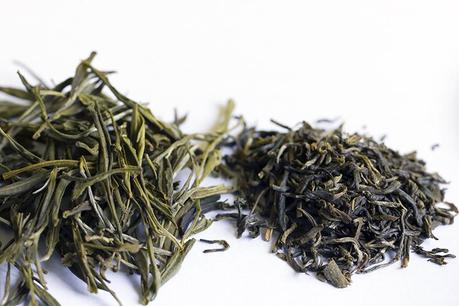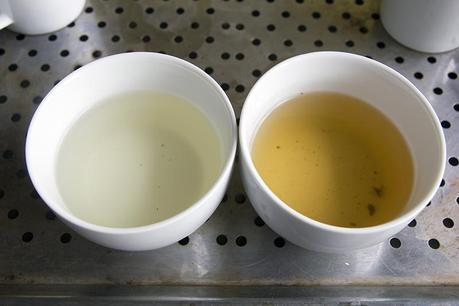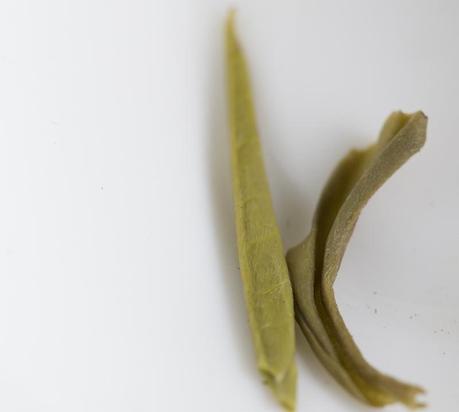One of the recurring themes we frequently tackle on this site is production quality, sharing how to discern quality, well-made tea from poorly made ones.
Often most of us are tentative over assessment because we are skittish over offending the viewpoints of others. However personal preference doesn’t change objective facts.
Just because I enjoy instant coffee for example doesn’t change the fact that it is cheap and low in production quality- i.e. made from low quality beans in a mass produced manner.
From an objective standpoint, does it matter to the consumer?
Green tea is being used as an illustration for this post.
Flavanoid contents
This table is extracted from the USDA database for the Flavanoid Content of Selected Foods, Release 3 (2011) (page 97) for tea, green, brewed (description as per USDA)
Flavanoid Mean N Min Max
Epicatechin 7.36 94 1.9 26
Epicatechin 3-gallate 16.39 97 1.69 139.60
Epigallocatechin 22.27 97 1 54.40
Epigallocatechin 3-gallate 64.15 97 2.31 203.20
Catechin 3.28 66 0.00 44.40
Thearubigins 1.08 4 0.00 4.30
As you can see, the variance in nutritional content is massive.
Take Epigallocatechin 3-gallate or ECGC for example, the variance is almost 100 times when comparing the highest to the lowest among the 97 teas tested.
ECGC is associated with a host of health benefits such as prevention of cancer, prevention of Alzheimer disease among others- typical medical disclaimers apply.
Why is there such a huge variation in the content levels?
There are a number of reasons:
i) Cultivar- certain cultivars- i.e. sub-specifies of the Camellia sinensis plant- have higher flavanoid contents than others
ii) Area where it is grown- soil, elevation all come to play
iii) Production
We will just focus on one aspect- production quality here.
Understanding the process
What makes a green tea a green tea is that it is substantially un-oxidized.

That is to say that there is no deliberate, controlled stage to oxidize the tea- unlike black, oolong and white tea.
Although technically oxidation takes place the very moment the leaves are picked by minimizing
i) the time elapsed from picking the leaves to sending it for ‘kill green’ (see next)
ii) the conditions for oxidation- i.e. heat and humidity- for instance storing the leaves in a bamboo basket or working in a largely shaded forested area
The oxidation is kept very minimal.
In practice, because of the cost involved transporting the leaves back and forth or ignorance, this is generally only practiced in traditional green tea markets such as China and Japan, and for specialty tea.
The next stage is ‘kill green’- a direct translation of “shaqing” (杀青) a stage in Chinese tea production (for green, oolong and dark tea) where the tea leaves are quickly heated to destroy the enzymes that causes oxidation.
The difficulty of this stage is accentuated by the fact that oxidation is sped up by heat, in fact with each 10⁰C increase in temperature, the oxidation rate doubles and this peaks at 50-60⁰C.
At the same time, the enzymes are only destroyed at temperatures of 85⁰C and above.
So a machine that takes a long time to heat the leaves to temperatures of 85⁰C and above would have increased the oxidation levels before the enzymes are destroyed.
At the same time it has to be even.
Unlike what is accustomed by commodity black tea producers, to keep oxidation levels to a minimum and preserve the ECG, ECGC etc contents, the amount of tea leaves that can be processed at a time is lower.
What I am driving at is this increases the complexity and production time and hence the cost- labor, machine wear and tear.
What does it mean?

Take a look at the table again: thearubigins are formed by the oxidation of Epigallocatechin and ECGC to form this new compound.
From a much smaller sample size (4), we got a range of 0 to 4.30.
For higher grade productions, substantially nil oxidation is possible, preserving the ECGC, EGC compounds in its original form.
Even if you aren’t concerned about the health aspect, the oxidation messes with the polyphenol to amino acid ratio which results in a bitter and astringent tea.
In the experiment described below, neither I nor my wife was able to consume even a 30 ml cup of the second “maofeng” without expelling the liquid from our mouth.
It was THAT horrid.
A Tale of 2 Maofengs

In the photos I used in this post, I used 2 teas marketed as ‘Maofeng’: Huangshan Maofeng and a tea that neither had downy fur nor the blade like appearance that collectively gives Maofeng its name.
Visually it is like comparing the dry leaves of a green and a black tea, not surprisingly since the second ‘maofeng’ was produced in an area that historically specializes in black tea, no doubt importing much of the same production techniques, cultivars and machinery.
Both teas were brewed at 80⁰C with a taster mug (150ml) using 3 grams of tea for 2 minutes.
The Huangshan Maofeng has the expected green tea liquor- clear pale green- while the ‘maofeng’ looked really reddish which is the color imparted by thearubigins.
The wet leaves are also telling, the lush green color of the Huangshan Maofeng versus the dull somewhat reddish color of the “maofeng”.
Why does it happen?
To be fair to the second “maofeng”, it has 1 redeeming factor- at wholesale levels it was approximately half the price of the first ‘maofeng’ although to be honest I feel it is worth much less.
In areas that are traditionally non green tea producers, it could be lack of equipment, infrastructure or knowledge.
When offered to a market that is unfamiliar with green tea and marketed as a pure health product, people might be willing to endure the taste for its purported health benefit. (Of course we now know that the health aspect is lacking as well.)
Whether you are drinking for the taste, the health aspect or both, it makes sense to seek for a better quality tea.
It might not necessarily be much more expensive (if at all) but I would rather spend $2 to achieve my goals than $1 to achieve nothing.
See other articles on Selection and Storage of Tea
